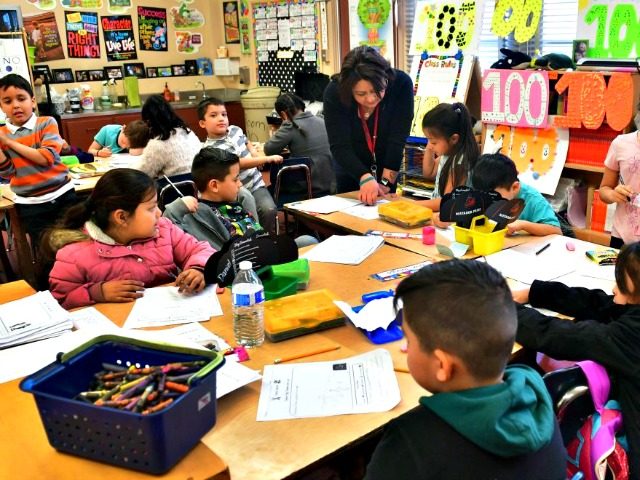Lower- and middle-income families who struggle with the costs associated with hiring private tutors for their children this fall may ultimately be dealing with a greater loss of learning as their children fall further behind.
According to a report at NBC News Sunday, the disparity between some with means to afford private schools and tutors and those without those means will likely contribute to a stark gap already widened in public schools following the adoption of many fruitless progressive reforms.
As Bloomberg has noted, the U.S. already spends approximately $700 billion annually on K-12 education.
Yet, despite this level of investment in public schools, recent results of the National Assessment of Educational Progress (NAEP), also known as the Nation’s Report Card, found U.S. fourth and eighth graders made “no progress” in either mathematics or reading over the past decade, while attending school, in person.
Public schools claim to be, first and foremost, all about “equity,” yet the achievement gap, while students have been taught in person, has widened between higher performing, mostly white and Asian students, and lower performing, mostly black and Hispanic students.
Dr. Peggy Carr, associate commissioner of the National Center for Education Statistics, noted the same Nation’s Report Card assessment results for students actually attending school:
Over the past decade, there has been no progress in either mathematics or reading performance, and the lowest-performing students are doing worse. In fact, over the long term in reading, the lowest-performing students—those readers who struggle the most—have made no progress from the first NAEP administration almost 30 years ago.
“The tests have served as a steady reminder that no matter the increase in federal investment in K–12 schools or the size of the Cabinet-level agency, Washington has not improved student achievement over time,” read a recent report by the Heritage Foundation.
Now, as teachers’ unions demand schools remain closed unless significantly more federal funding is provided, parents are weighing plans of their own for their children’s education, and some of them can be costly.
NBC News noted the “sharp rise in interest” in private tutors, some with fees ranging from $25 to $80 per hour.
For those who are unable to afford private tutoring, “microschooling” or “learning pods” are options, whereby several families join together to purchase the services of a private tutor or retired teacher.
Still, the expense is likely not one that many parents of lower- and middle- income brackets had expected to bear, and some will choose to go with their public school district’s remote learning program, which may have been unsuccessful during the school shutdowns.
The failure of public schools to open means the already wide education gap between children from poorer families and those from middle- and upper-income homes, could grow wider still.
According to a working paper by researchers at Brown University and the University of Virginia, projections of “learning loss” due to the coronavirus crisis suggest:
[S]tudents are likely to return in fall 2020 with approximately 63-68% of the learning gains in reading relative to a typical school year and with 37-50% of the learning gains in math. However, we estimate that losing ground during the COVID-19 school closures would not be universal, with the top third of students potentially making gains in reading. Thus, in preparing for fall 2020, educators will likely need to consider ways to support students who are academically behind and further differentiate instruction.
Co-author Jim Soland, an assistant professor of quantitative methods at the University of Virginia School of Education, told NBC News:
Exposure to instructional time was different between high- and low-income schools, so if you factor that into the projections, what we saw was a widening of achievement gap on the basis of school socioeconomic status. Now, if you imagine parents in high end schools are also going out and getting additional resources paying for a tutor and the like, it’s hard to imagine that not further exacerbating achievement gaps.
“Missing school for a prolonged period will likely have major impacts on student achievement,” the authors concluded. “Further, students will likely return in the fall of 2020 with greater variability in their academic skills … our learning loss projections imply that educators and policymakers will need to prepare for many students to be substantially behind academically when they return.”

COMMENTS
Please let us know if you're having issues with commenting.